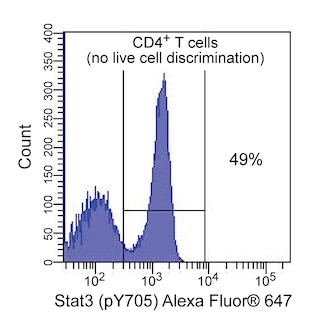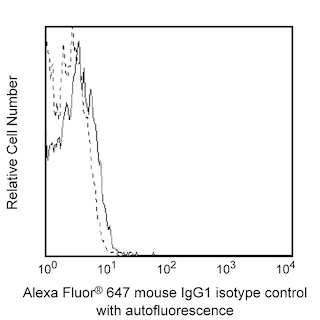-
抗体試薬
- フローサイトメトリー用試薬
-
ウェスタンブロッティング抗体試薬
- イムノアッセイ試薬
-
シングルセル試薬
- BD® AbSeq Assay | シングルセル試薬
- BD Rhapsody™ Accessory Kits | シングルセル試薬
- BD® Single-Cell Multiplexing Kit | シングルセル試薬
- BD Rhapsody™ Targeted mRNA Kits | シングルセル試薬
- BD Rhapsody™ Whole Transcriptome Analysis (WTA) Amplification Kit | シングルセル試薬
- BD Rhapsody™ TCR/BCR Profiling Assays (VDJ Assays) | シングルセル試薬
- BD® OMICS-Guard Sample Preservation Buffer
-
細胞機能評価のための試薬
-
顕微鏡・イメージング用試薬
-
細胞調製・分離試薬
-
- BD® AbSeq Assay | シングルセル試薬
- BD Rhapsody™ Accessory Kits | シングルセル試薬
- BD® Single-Cell Multiplexing Kit | シングルセル試薬
- BD Rhapsody™ Targeted mRNA Kits | シングルセル試薬
- BD Rhapsody™ Whole Transcriptome Analysis (WTA) Amplification Kit | シングルセル試薬
- BD Rhapsody™ TCR/BCR Profiling Assays (VDJ Assays) | シングルセル試薬
- BD® OMICS-Guard Sample Preservation Buffer
- Japan (Japanese)
-
Change country/language
Old Browser
Looks like you're visiting us from {countryName}.
Would you like to stay on the current country site or be switched to your country?




Flow cytometric analysis of CD365 (TIM-1) expressed on human 769-P cells. Cells from the human Jurkat (Acute T cell leukemia, ATCC TIB-152; Left Panel) and 769-P (Renal cell adenocarcinoma, ATCC CRL-1933; Right Panel) cell lines were stained with BD Horizon™ Fixable Viability Stain 450 (Cat. No. 562247). The cells were washed and then stained with either Alexa Fluor® 647 Mouse Anti-Human CD365 (TIM-1) antibody (Cat. No. 563957; solid histogram), or Alexa Fluor® 647 Mouse IgG1 κ Isotype Control (Cat. No. 557714; dashed line histograms). The fluorescence histograms were derived from gated events with the forward and side light-scatter and Fixable Viability Stain 450 characteristics (data not shown) of viable lymphocytes. Flow cytometric analysis was performed using a BD™ LSR II Flow Cytometer System.


BD Pharmingen™ Alexa Fluor® 647 Mouse Anti-Human CD365 (TIM-1)

Regulatory Statusの凡例
Any use of products other than the permitted use without the express written authorization of Becton, Dickinson and Company is strictly prohibited.
Preparation and Storage
Product Notices
- This reagent has been pre-diluted for use at the recommended Volume per Test. We typically use 1 × 10^6 cells in a 100-µl experimental sample (a test).
- Please refer to www.bdbiosciences.com/us/s/resources for technical protocols.
- Alexa Fluor® 647 fluorochrome emission is collected at the same instrument settings as for allophycocyanin (APC).
- Alexa Fluor® is a registered trademark of Molecular Probes, Inc., Eugene, OR.
- The Alexa Fluor®, Pacific Blue™, and Cascade Blue® dye antibody conjugates in this product are sold under license from Molecular Probes, Inc. for research use only, excluding use in combination with microarrays, or as analyte specific reagents. The Alexa Fluor® dyes (except for Alexa Fluor® 430), Pacific Blue™ dye, and Cascade Blue® dye are covered by pending and issued patents.
- For fluorochrome spectra and suitable instrument settings, please refer to our Multicolor Flow Cytometry web page at www.bdbiosciences.com/colors.
- Source of all serum proteins is from USDA inspected abattoirs located in the United States.
- Caution: Sodium azide yields highly toxic hydrazoic acid under acidic conditions. Dilute azide compounds in running water before discarding to avoid accumulation of potentially explosive deposits in plumbing.
- An isotype control should be used at the same concentration as the antibody of interest.
関連製品



The 1D12 monoclonal antibody specifically binds to CD365, the T-cell immunoglobulin mucin receptor 1 (TIM-1). TIM-1 is expressed on kidney epithelial cells, T cells, and some hematopoietic and non-hematopoietic cells. CD365 (TIM-1) is a type 1 transmembrane glycoprotein that serves as a receptor for hepatitis A virus and is encoded by the HAVCR1 (Hepatitis A virus cellular receptor 1) gene. TIM-1 also serves as a receptor for phosphatidylserine which is exposed on the surface of apoptotic cells. TIM-1 can reportedly mediate the uptake of apoptotic cells through the recognition of phosphatidylserine and thus help maintain tissue homeostasis and self-tolerance. TIM-1 is likewise known as Kidney injury molecule 1 (KIM-1). It is highly expressed by cancerous kidneys, and upregulated in the proximal tubular epithelium and shed into the urine during acute and chronic kidney injury. CD365 (TIM-1) also functions as a costimulatory molecule for immune cells. It is expressed by activated CD4+ T cells and regulates the effector functions (eg, enhanced cytokine production) and survival of differentiated T cells, including those mediating Th2-like immune responses. Other ligands have been described for TIM-1 including TIM-4 and LMIR5 (also known as CD300b) which are expressed by myeloid cells. With respect to disease associations, the HAVCR1 gene has been linked to asthma, allergy, and some autoimmune diseases.
Development References (7)
-
Binne LL, Scott ML, Rennert PD. Human TIM-1 associates with the TCR complex and up-regulates T cell activation signals. J Immunol. 2007; 178(7):4342-4350. (Biology). View Reference
-
Freeman GJ, Casasnovas JM, Umetsu DT, DeKruyff RH. TIM genes: a family of cell surface phosphatidylserine receptors that regulate innate and adaptive immunity.. Immunol Rev. 2010; 235(1):172-89. (Biology). View Reference
-
Kim HY, Eyheramonho MB, Pichavant M, et al. A polymorphism in TIM1 is associated with susceptibility to severe hepatitis A virus infection in humans. J Clin Invest. 2011; 121(3):1111-1118. (Clone-specific: Blocking, Functional assay). View Reference
-
Kobayashi N, Karisola P, Pena-Cruz V, et al. TIM-1 and TIM-4 glycoproteins bind phosphatidylserine and mediate uptake of apoptotic cells. Immunity. 2007; 27(6):927-940. (Immunogen: Blocking, Flow cytometry, Functional assay). View Reference
-
Manangeeswaran M, Jacques J, Tami C, et al. Binding of hepatitis A virus to its cellular receptor 1 inhibits T-regulatory cell functions in humans. Gastroenterology. 2012; 142(7):1516-1525. (Clone-specific: Blocking, Functional assay). View Reference
-
Rennert PD. Novel roles for TIM-1 in immunity and infection. Immunol Lett. 2011; 141(1):28-35. (Clone-specific: Blocking). View Reference
-
Rodriguez-Manzanet R, DeKruyff R, Kuchroo VK, Umetsu DT. The costimulatory role of TIM molecules. Immunol Rev. 2009; 229(1):259-270. (Biology). View Reference
Please refer to Support Documents for Quality Certificates
Global - Refer to manufacturer's instructions for use and related User Manuals and Technical data sheets before using this products as described
Comparisons, where applicable, are made against older BD Technology, manual methods or are general performance claims. Comparisons are not made against non-BD technologies, unless otherwise noted.
For Research Use Only. Not for use in diagnostic or therapeutic procedures.
Report a Site Issue
This form is intended to help us improve our website experience. For other support, please visit our Contact Us page.